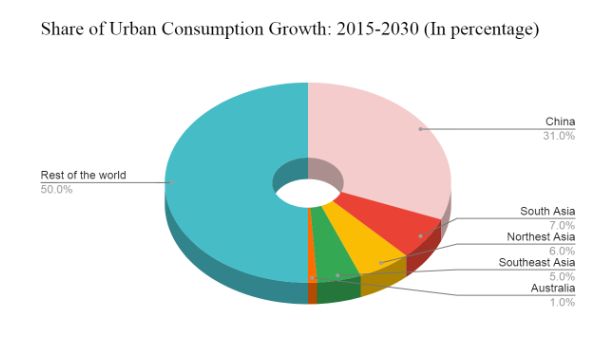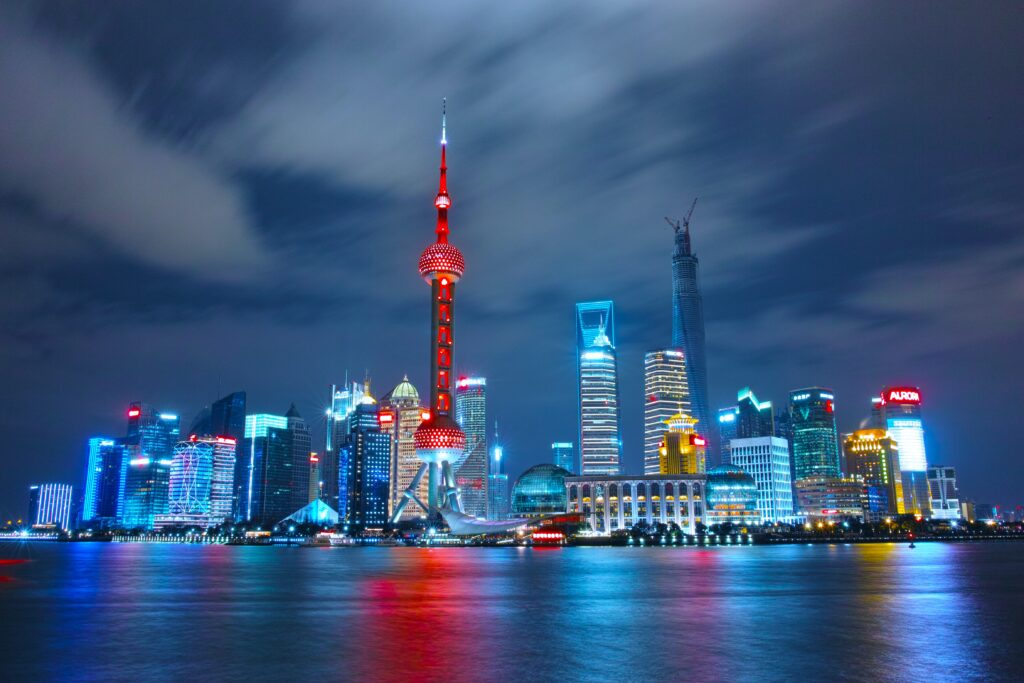Including more than 20 countries, home to nearly 60% of the world’s population with a diversity of more than 3,000 languages spoken- The Asia Pacific Region is pacing towards changing the centre of gravity of the global economy. With the right strategy in mind, brands with a vision of global presence should recognize and readily utilize this massive region.
By 2050, Asia will rise to six times in purchasing power parity, reaching the current level of Europe. Today, China, Japan and India make up the world’s top five largest markets as measured by total consumer expenditure. 4 out of 10 largest markets will be in Asia by 2034. Over the past two decades, Asia’s share in the top-performing firms globally has risen from 19 per cent to 30 per cent


Redefining Trade
The previous decade or so has been characterized by a supply chain trajectory with production units in low labour cost available regions concentrated largely in Asia and followed its way to regions with high-wage. Now, the picture resembles a different story. With a steady increase in the production volume, a decline of 5.6% was seen in cross-border trades in the region. 52% of trade is intra-regional in Asia in contrast to just 41 per cent in North America. This is indicative of a more robust domestic market. R&D and innovation are at the core of redefining business chains in the region.

Embracing Technology
IT spending in the APAC region continues to top the chart. Investments which include IoT, hardware, software, and services, is expected to grow by 10% in 2022 and reach USD 450 Billion by the end of 2025. With 85% of the world’s intellectual property filings in 2017, the region consistently exhibited high levels of innovation in technology like blockchain, artificial intelligence (AI), robotics and automation.

The Digital Space
The region has been strongly fuelled by digital consumption in recent years. The sustained growth of businesses is directly linked to their intensity of competitiveness in the digital space. Characterized as the world’s fastest-growing internet market- China, Southern Asia, and South-eastern Asia make up nearly 50% of the global internet users. Businesses that went digital in 2020 recorded 38% of growth and this trend is forecasted to reach 44% by 2025. Following the Covid-19 pandemic, a marketing survey indicated that 40% of companies witnessed an increase in website sales. Brand advertising through digital channels is of critical importance in the region. In the next 3 years, expenditure on advertising spending in the APAC region is forecasted to reach USD 245 Billion, growing at a 5.4% CAGR. Embracing E-commerce channels should be the major priority to utilize the potential of the region. By 2025, e-commerce sales are expected to reach USD 2 Trillion.

Investments
China is currently second on the list, next to the USA in venture capital funding for startups. Asia makes up more than one-third of the total unicorns, globally. A 67% rise in total private investments accounting for USD 193 Billion has been witnessed in the APAC region. This figure of investment makes up more than a quarter of the global figure of USD 670 Billion. By 2021, the number of unicorns in the region has increased by 25% to reach a total of 450.

Demographics of the region
Generating nearly 40% of global consumption by 2040, the APAC region will prove to be a dynamic one. China’s working-age population, considered one of the world’s key consumer demographics, is set to account for 12 cents of every USD 1 of worldwide urban consumption by 2030. By 2025, Chinese consumers spending on luxury goods which accounted for 30 Million that makes up one-third globally in 2018 will nearly double in 2030.

Challenges to be faced to build a resilient business
The APAC region market despite offering a broad base of customers, at the same time poses an incredibly versatile and diverse market space. Language, culture and market maturity varies highly from one country to another. A strategic disposition which requires a very different approach than the western countries is the key to sustaining the challenge posed by the region, thus, there are no existing guidelines to follow. Choosing the right medium for reaching out to the last customer is a dreary task which demands constant adaptation to different local cultures and languages in the promotion of the products. Jurisdiction in the APAC region needs to be closely examined to strategise the path ahead.

Way forward
A strong strategic demeanour when it comes to marketing will be essential for both Asian and Western countries to find grip in the diverse and fragmented APAC market. Unlike the developed countries, where there exist well-developed brands and retail channels, the customer in this region needs to be acquainted with a lot of basics. Understanding the domestic market and foreign direct investment regulations, which vary largely throughout the area is of utmost importance. Localization can prove to be a key to the success of entering the APAC market. According to a survey, 51% of Chinese and 41% of Japanese respondents felt testimonials from their local market were important.
Products, operations and marketing campaigns should take into consideration cultural nuances, beliefs, sensitivities, and colloquialisms and idioms. Attention to the finer details of the consumer need will prove to be strategically important for faring well in the APAC region. Understanding the audience can be brought upon by strategic collaborations. Doing business in the APAC region has an array of benefits to offer like access to a diverse and competent talent pool, global presence and product adaptability. With the ever-growing population twinned with better expenditure capability, this region has a lot to offer.
Sources: Businesswire, KPMG, HSBC, McKinsey, Euromonitor International, EY, Cushman Wakefield





 Market Research
Market Research Consumer Research
Consumer Research Industry Research
Industry Research Market Entry Strategy
Market Entry Strategy Feasibility Studies
Feasibility Studies Product Research
Product Research Automobile & Mobility
Automobile & Mobility Banking and Finance
Banking and Finance Consumer Products & FMCG
Consumer Products & FMCG Ecommerce & Retail
Ecommerce & Retail Industry & Manufacturing
Industry & Manufacturing Government & Public Sector
Government & Public Sector Industry Associations
Industry Associations Technology & Software
Technology & Software Venture Capital & PE
Venture Capital & PE Consulting & Advisory
Consulting & Advisory India Entry Market Research
India Entry Market Research Innovation Consulting
Innovation Consulting KX Market Radar
KX Market Radar Business Model Development
Business Model Development Gen Z Navigator
Gen Z Navigator